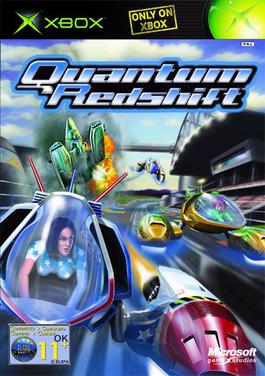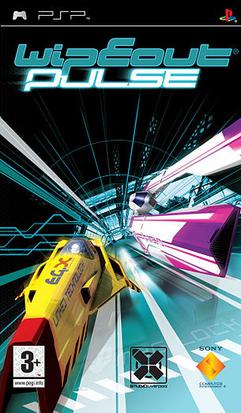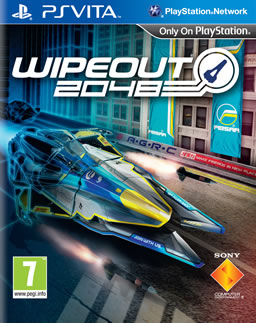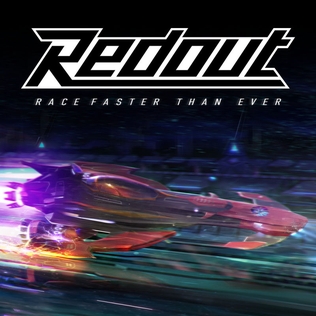Wipeout is a series of futuristic anti-gravity racing video games developed by Studio Liverpool.

Wipeout 2097 is a racing video game developed and published by Psygnosis. It is the second installment released in the Wipeout series and the direct sequel of the original game released the previous year. It was originally released in 1996 for the PlayStation, and in 1997 for Microsoft Windows and the Sega Saturn. It was later ported by Digital Images to the Amiga in 1999 and by Coderus to Mac OS in 2002.

Wipeout 64 is a 1998 futuristic racing game developed by Psygnosis and published by Midway for the Nintendo 64. It is the third game in the Wipeout series and remains the only one published on a Nintendo console. At the time of the game's release, developer Psygnosis had been owned for five years by Sony Computer Entertainment, for whose hardware all subsequent Wipeout games have been released exclusively.

Wipeout Pure is a futuristic racing video game developed by Studio Liverpool and published by Sony Computer Entertainment for the PlayStation Portable. It was released in 2005 on 24 March for North America, on 7 April in Japan and on September 1 in Europe. In North America and Europe, it was a launch title for the platform.

Midtown Madness 2 is a 2000 open world racing video game for Microsoft Windows. It is the sequel to 1999's Midtown Madness, developed by Angel Studios and published by Microsoft. Unlike its predecessor, which is entirely set in Chicago, it features two open worlds in which to race, fictional representations of San Francisco, California and London, England. Players can choose from a variety of American and British vehicles including sports cars, buses and taxi cabs. The game has various modes of multiplayer connectivity, and included support for the now defunct MSN Gaming Zone. A sequel Midtown Madness 3 was released for Xbox in 2003.

Psygnosis Limited was a British video game developer and publisher headquartered at Wavertree Technology Park in Liverpool. Founded in 1984 by Ian Hetherington, Jonathan Ellis, and David Lawson, the company initially became known for well-received games on the Atari ST and Amiga. In 1993, it became a wholly owned subsidiary of Sony Computer Entertainment (SCE) and began developing games for the original PlayStation. It later became a part of SCE Worldwide Studios. The company was the oldest and second largest development house within SCE's European stable of developers, and became best known for franchises such as Lemmings, Wipeout, Formula One, and Colony Wars.

Tim Wright, known professionally as Cold Storage, is a Welsh video game music composer most known for his work in video game soundtracks such as Shadow of the Beast II, Agony, Lemmings, Wipeout and Colony Wars.

Wipeout 3 is a futuristic racing video game developed by Psygnosis exclusively for the PlayStation. The title is the fourth game in the Wipeout series, and was released in Europe and North America in September 1999. Players control anti-gravity ships and use weapons to force other contenders out of the race.

Wipeout is a racing video game developed and published by Psygnosis. It is the first game in the Wipeout series. It was originally released in 1995 for PlayStation and DOS, and in 1996 for Sega Saturn, being a launch title for the PlayStation in Europe. It was re-released as a downloadable game for the PlayStation 3 and PlayStation Portable via the PlayStation Network in 2007.

Quantum Redshift is a video game for the Xbox console, developed by Curly Monsters and published by Microsoft Game Studios in 2002. The game is a futuristic racing game with the addition of combat and character rivalries that influence competitive races. Quantum Redshift was conceived as a spiritual successor to the racing game Wipeout and was developed by several former Psygnosis staff who worked on the game. Publication of the game was troubled, with Curly Monsters staff voicing creative differences on packaging and marketing decisions made by Microsoft Game Studios. The game received mixed to average reviews from critics, with praise directed at the game's visual presentation and smooth framerate, and criticism towards the lack of distinctive and original features in its design and gameplay compared to its contemporaries. The game was commercially unsuccessful, leading to the discontinuation of a planned sequel and the dissolution of Curly Monsters in 2003.

Wipeout Pulse is a futuristic racing video game developed by Studio Liverpool and published by Sony Computer Entertainment for the PlayStation Portable. It was released in December 2007 in Australia and Europe, and in February 2008 in North America. A PlayStation 2 port was released in Europe in June 2009. The game is the seventh installment of the Wipeout series and serves as a sequel to Wipeout Pure. It takes place in 2207 and revolves around players competing in the FX400 anti-gravity racing league.

Wipeout HD is a futuristic racing video game developed by Studio Liverpool and published by Sony Computer Entertainment for the PlayStation 3. It is the eighth installment of the Wipeout series and was first released on the PlayStation Network on 25 September 2008 in both Europe and North America, and on 29 October in Japan. A major expansion pack titled Wipeout HD Fury was released worldwide via the PlayStation Network worldwide on 23 July 2009. A retail version was later made available in Europe on 16 October. Both Wipeout HD and its HD Fury Expansion are playable in 3D when connected to a 3D TV.
Creative Vault AB is an independent video game developer based in Gothenburg, Sweden. The company was founded by Staffan Langin and Olof Gustafsson in the summer of 2005 with the desire to develop games for multiple platforms. Its first game was Crash Commando (2008), an online shooter for the PlayStation 3. In 2012, Gustafsson left the company, which was renamed Creative Vault Studios. Under the guidance of Langin as sole CEO, the company has worked on several projects with Sony Interactive Entertainment, beginning with the virtual reality port for Hustle Kings in 2016. The following year, the studio collaborated with XDev and Clever Beans on Wipeout Omega Collection, a remaster of Wipeout HD, Wipeout HD Fury, and Wipeout 2048.

Wipeout 2048 is a racing game in which players pilot anti-gravity ships around futuristic racetracks. It was developed by Studio Liverpool and published by Sony Computer Entertainment. It was a launch game for the Sony PlayStation Vita hand-held console, released worldwide in 2012. It is the ninth and latest instalment of the Wipeout series and the last game to be developed by Studio Liverpool before its closure in August 2012. As the title implies, Wipeout 2048 is a prequel to the first game in the series and is set in the years 2048, 2049, and 2050.

Firesprite is a British video game developer formed in 2012 by former members of Studio Liverpool based in Liverpool. In September 2021, Sony Interactive Entertainment acquired the company, making them a first-party developer for PlayStation Studios.
Pacer, originally titled Formula Fusion, is a futuristic racing game by R8 Games for Microsoft Windows, PlayStation 4 and Xbox One. It was initially set to release on September 17, 2020. However, it was delayed until the end of September 2020. On October 19, R8 announced that the game would be released on October 29.

Wipeout Omega Collection is a 2017 futuristic racing video game compilation co-developed by XDev, Clever Beans and Creative Vault Studios and published by Sony Interactive Entertainment for the PlayStation 4. It was first released in North America on June 6 2017 and in Europe a day later.

Antigraviator is an anti-gravity racing video game developed by Belgian developer Cybernetic Walrus and published by Iceberg Interactive on June 6, 2018, for Microsoft Windows. It was ported to PlayStation 4 on October 29, 2019, and to Xbox One on May 1, 2020.

Redout is a racing video game developed and published by Italian studio 34BigThings. It is inspired by racing games such as F-Zero, Wipeout, Rollcage, and POD as stated on the game page on Steam.

NGEN Racing is an aircraft combat/racing video game developed by British studio Curly Monsters and published by Infogrames for the PlayStation in 2000.

















